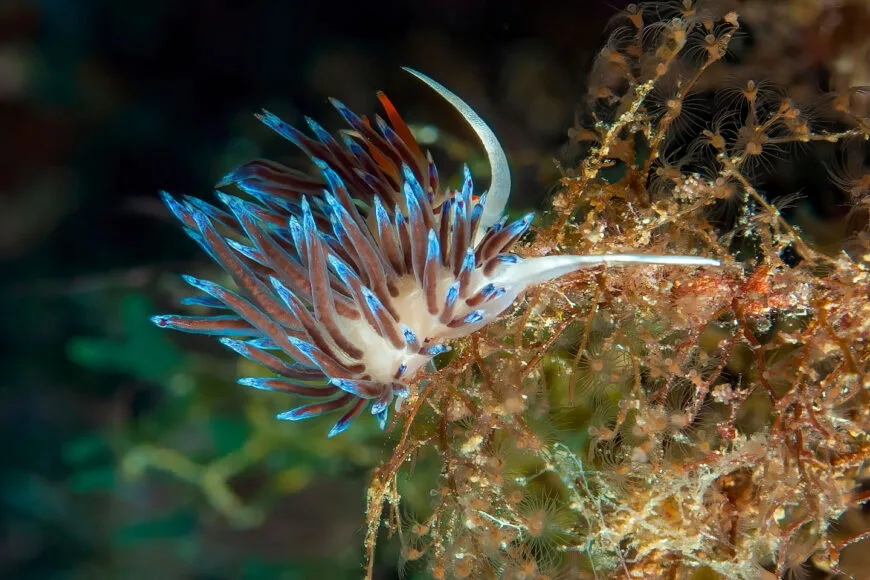Kleptopredation (noun, “KLEP-toh-pre-DAY-shun”)
Kleptopredation describes a hunting strategy where a predator targets prey that has recently eaten, effectively consuming both the prey and its last meal.
The prefix “klept-” comes from the Greek for theft, making the term fitting — the predator isn’t just feeding on the animal itself, but also “stealing” the meal that the prey had just secured. Researchers first documented this unusual feeding tactic in 2017.
For years, scientists have known of animals that steal food from others, a behavior known as kleptoparasitism. A classic example is when hyenas drive lions off a fresh kill to take the carcass for themselves. However, in kleptoparasitism, the thief eats only the stolen food, not the hunter. Kleptopredation is different: here, the predator eats both the prey and the prey’s meal.
One striking example comes from the ocean. The brilliantly colored pilgrim hervia (Cratena peregrina), a type of sea slug, feeds on hydrozoans — tiny polyp colonies that catch plankton. But these slugs are selective: they prefer hydrozoans that have just eaten. By choosing prey already full of plankton, the sea slug enjoys a double portion — the polyp itself and the nutritious plankton it recently consumed.
Other animals also take advantage of this “two-for-one” feeding opportunity. Certain jumping spiders, for instance, hunt mosquitoes but show a preference for those that have just fed on blood. In this way, kleptopredation allows predators to maximize their energy intake with minimal effort — a clever twist on survival strategy.
